Features
All Data, All Workloads, Pushing the Limits, Experience
Tacnode is a cloud-native data platform capable of storing all data, challenging performance limits, ensuring correctness, and providing real-time capabilities across all scenarios, delivering an exceptional experience for both development and operations.
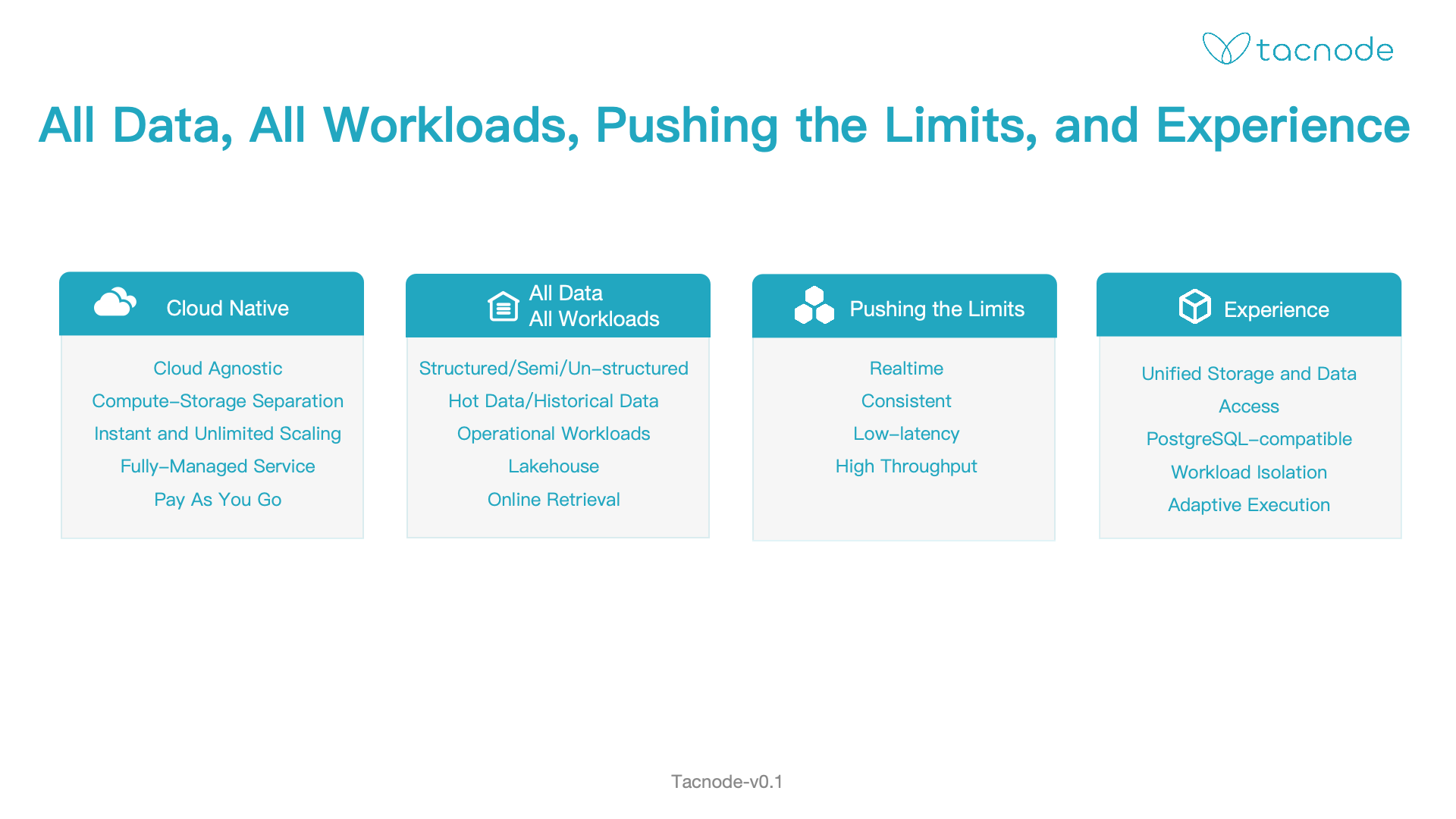
Better Relational DBMS
Tacnode serves as a relational database, offering superior capabilities compared to traditional relational databases.
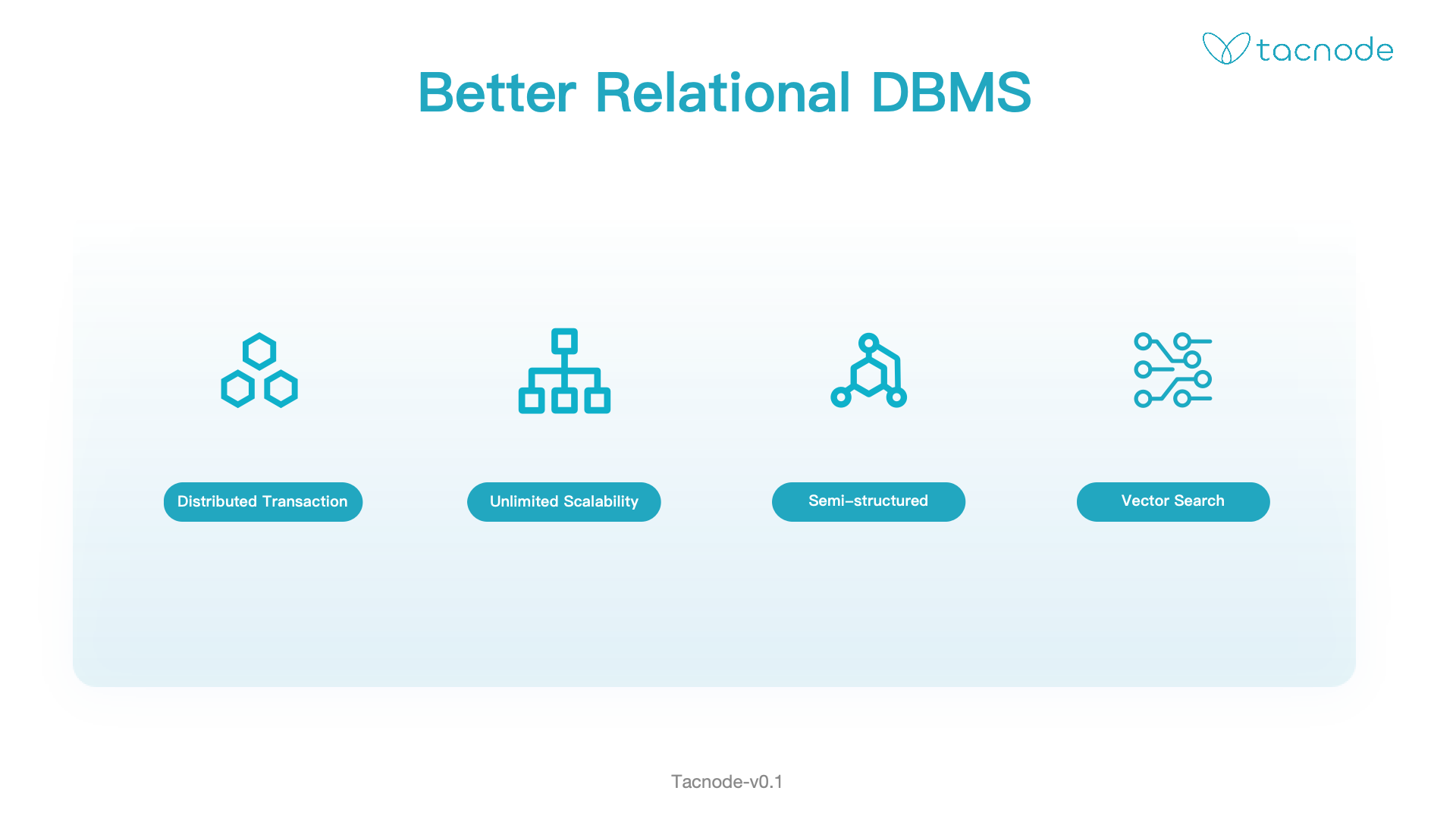
Single-machine relational databases like PostgreSQL face performance bottlenecks that limit their ability to meet business demands. Tacnode addresses this by enabling horizontal scaling, allowing businesses to enhance performance by adding more machines and resources. Distributed transaction support is essential for horizontal scaling, ensuring strong data consistency during expansion.
Additionally, Tacnode introduces the JSON type to efficiently manage semi-structured data.
With the rise of artificial intelligence, unstructured data such as text, images, audio, and video have been redefined as embedded vectors. By supporting vector data, Tacnode structures traditional unstructured data, facilitating the extraction of valuable insights.
Better NoSQL DBMS
Tacnode also functions as a NoSQL database. Unlike traditional NoSQL databases, Tacnode excels in expressing all relationships.
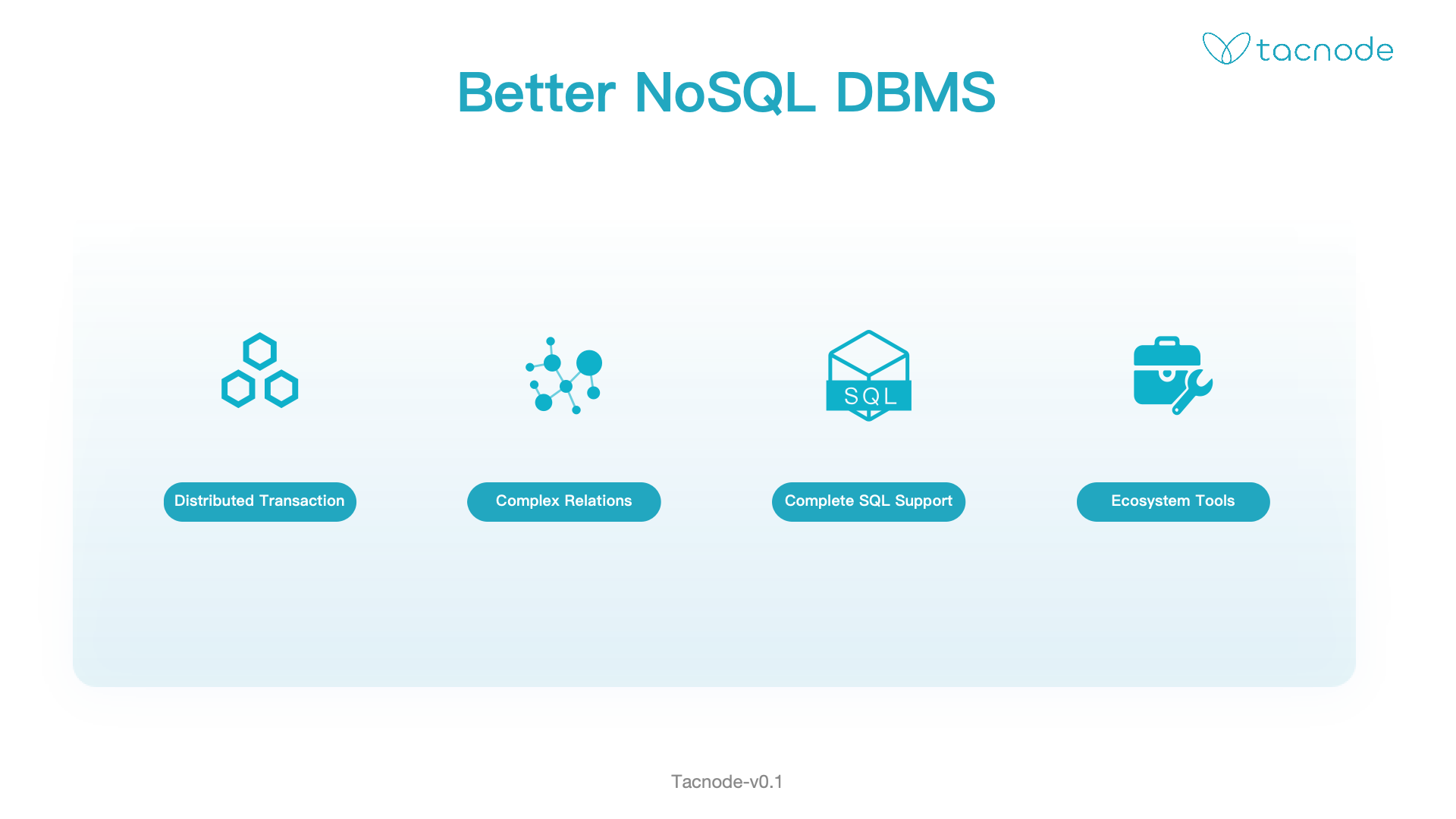
Document databases, the most popular NoSQL type, use document models to describe one-to-one and one-to-many relationships but struggle with many-to-many relationships. Storing entities in multiple documents leads to data duplication and inconsistency, while using references complicates consistency.
Tacnode's JSON type allows it to handle semi-structured data like JSON-based NoSQL databases for one-to-one and one-to-many relationships. For many-to-many relationships, Tacnode uses foreign keys within the relational model, ensuring consistency through distributed transactions. As a NoSQL database, Tacnode fully encompasses the capabilities and advantages of NoSQL databases, effectively managing semi-structured data, perfectly expressing many-to-many relationships, and ensuring strong consistency.
Tacnode supports the SQL query language, enabling complex query analyses like Joins and aggregations. SQL compatibility allows users to leverage various ecosystem tools, enhancing development efficiency.
Better Online Retrieval
Tacnode serves as an online retrieval engine, offering integrated unified search capabilities, including Keyword Search and Omni Search.
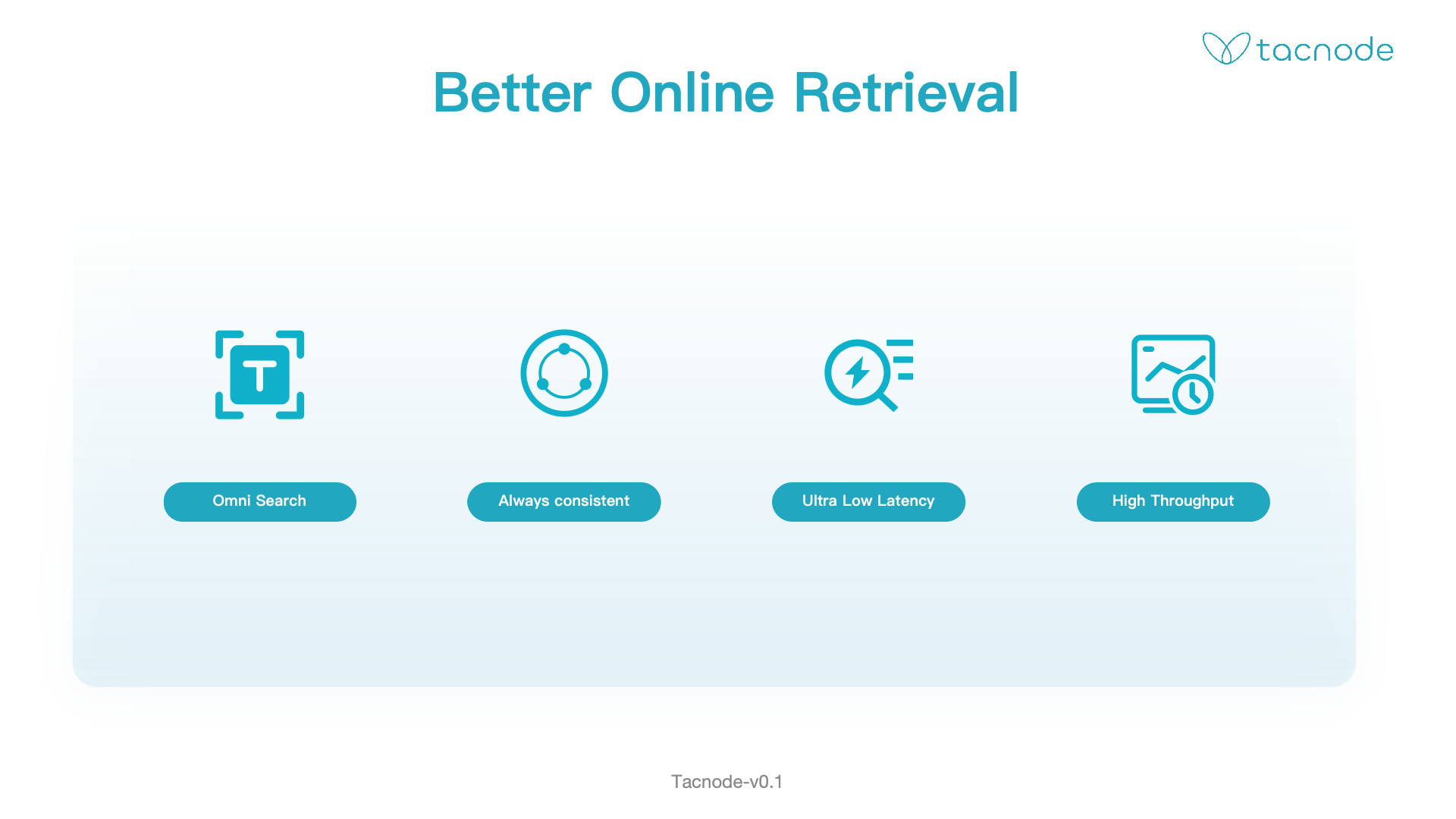
Storing original data in Tacnode eliminates the need for data synchronization between the search engine and the business database, preventing data delays. As a search engine, Tacnode ensures search results are always based on the latest data, resolving data delay issues and maintaining strong data consistency.
Better than a Data Lakehouse
Tacnode functions as a distributed context lake, supporting real-time data insertion and updates with high throughput and low latency. It ensures strong consistency and zero data latency while maintaining high performance, supporting high-concurrency interactive queries, millisecond-level experiences, and LakeHouse capabilities.
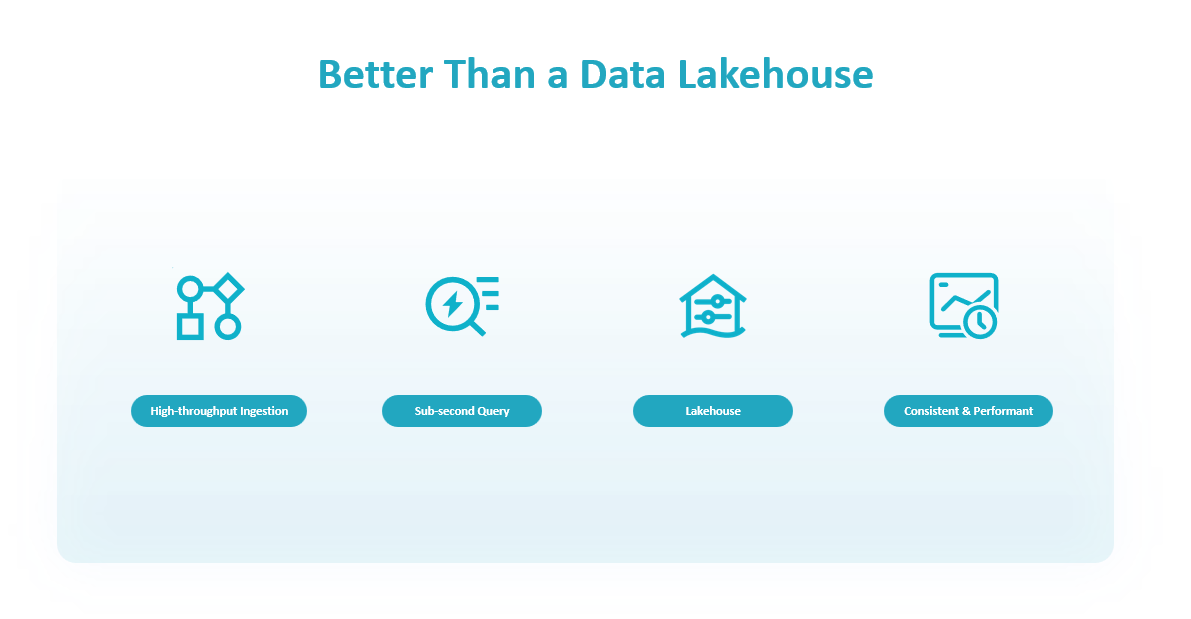
-
Traditional data warehouses ingest data in batches, achieving good performance and correctness but lacking real-time capabilities. Data latency is reduced to hours or minutes, but achieving lower latency while efficiently using resources is challenging. Most data warehouses and data lakes adopt this approach, meeting performance and correctness requirements but not achieving true real-time capabilities.
-
Some data warehouses support real-time data ingestion but only guarantee eventual consistency. Eventual consistency means data appears consistent after a delay, but continuous real-time ingestion can prevent this, leading to data inconsistency during queries. For example, a transfer transaction involving two updates may result in only one update being read, causing incorrect calculations. This issue arises from losing transaction attributes during synchronization, leading to inconsistency. While this approach meets performance and real-time requirements, eventual consistency does not guarantee data correctness.
Better Developer/Ops Experience
Tacnode excels as a database, NoSQL engine, search engine, and data warehouse, providing a superior experience in each scenario.
From a development and operations perspective, Tacnode offers a streamlined experience.
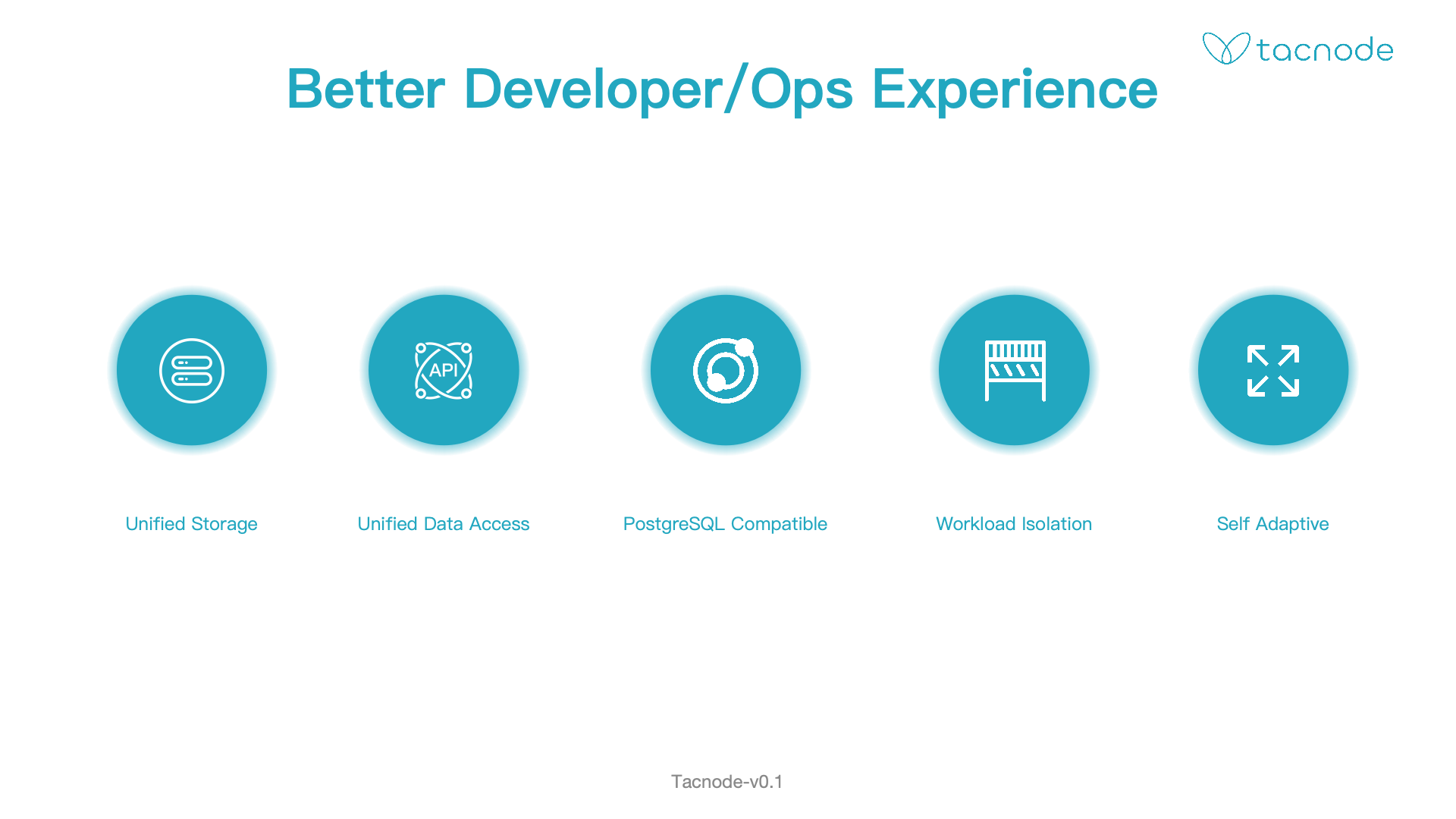
- Unified Storage: Centralized data storage eliminates the need for data synchronization tasks.
- Unified Data Access: A unified API simplifies user interaction.
- PostgreSQL Compatible: Compatibility with the PostgreSQL ecosystem allows users to apply existing relational database knowledge without learning new skills.
- Workload Isolation: Effective isolation ensures different workloads do not interfere with each other.
- Self Adaptive: Adaptive capabilities ensure optimal performance across all scenarios.
Data Loading/Unloading
Tacnode includes a built-in data synchronization service, supporting real-time data synchronization from multiple sources into the database.
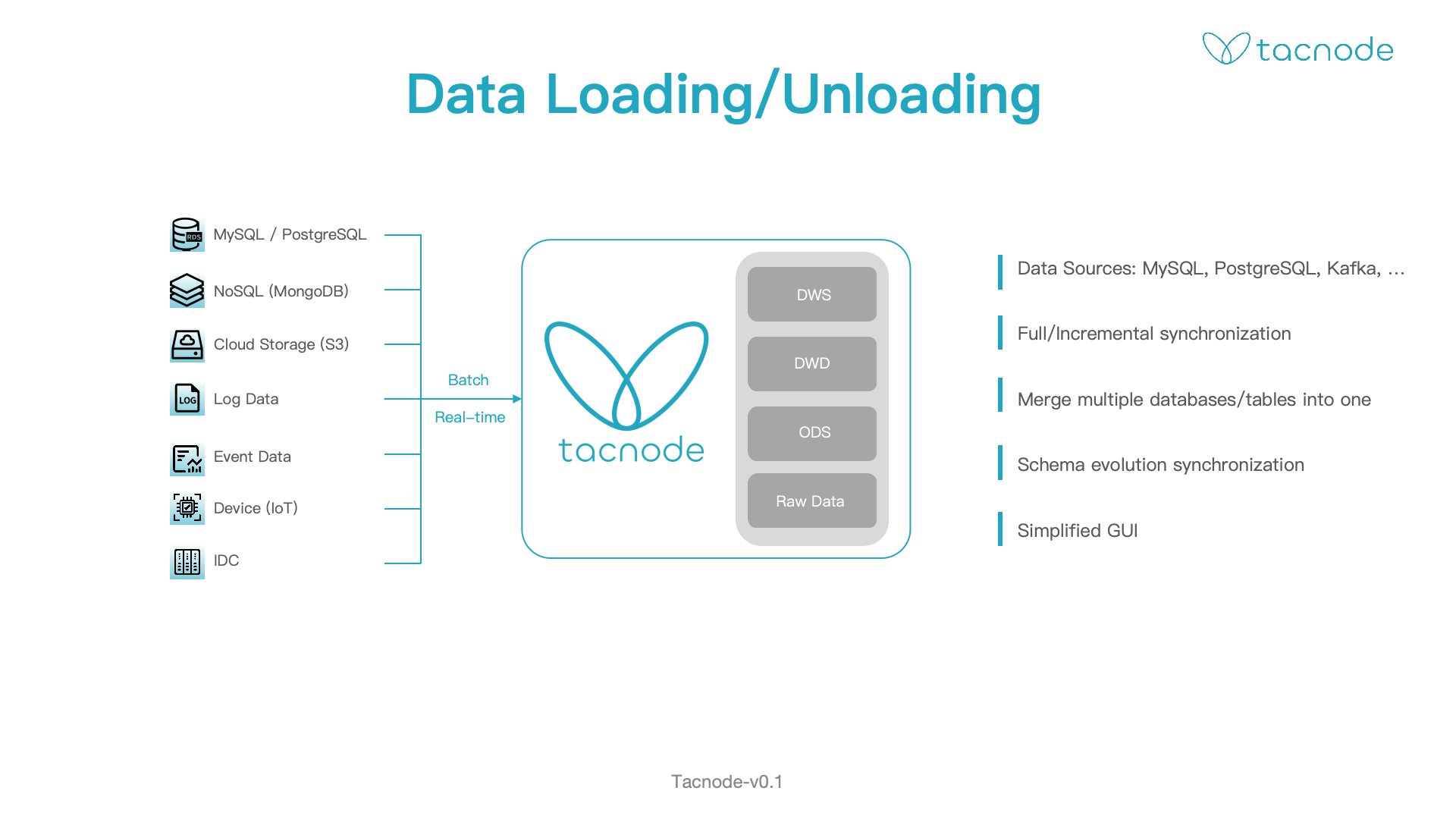
- Supports data sources such as MySQL, PostgreSQL, and Kafka
- Supports full synchronization, incremental synchronization, and seamless transition between the two
- Supports sharded databases and tables synchronization: No need for manual sharding; the data synchronization service consolidates sharded data into a single table in Tacnode.
- Supports schema evolution: The data synchronization service accommodates changes in the table structure of upstream data sources, such as adding new tables, fields, and field types.